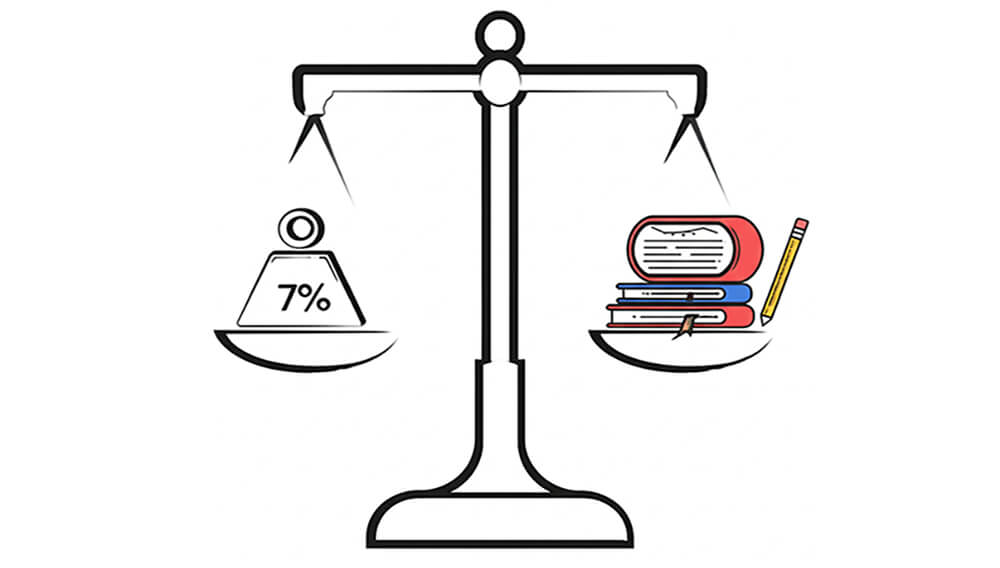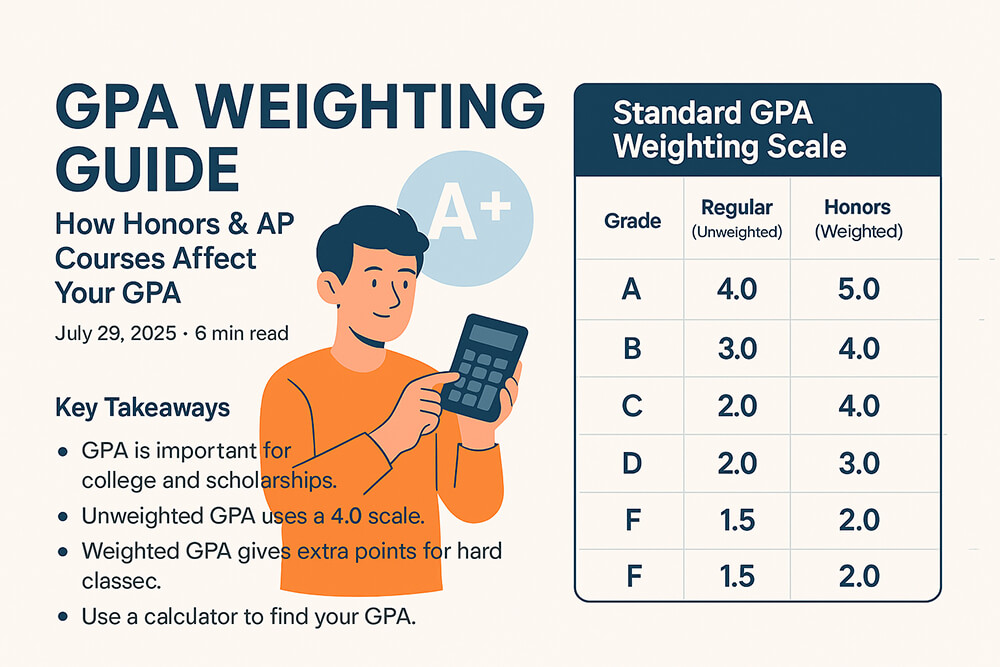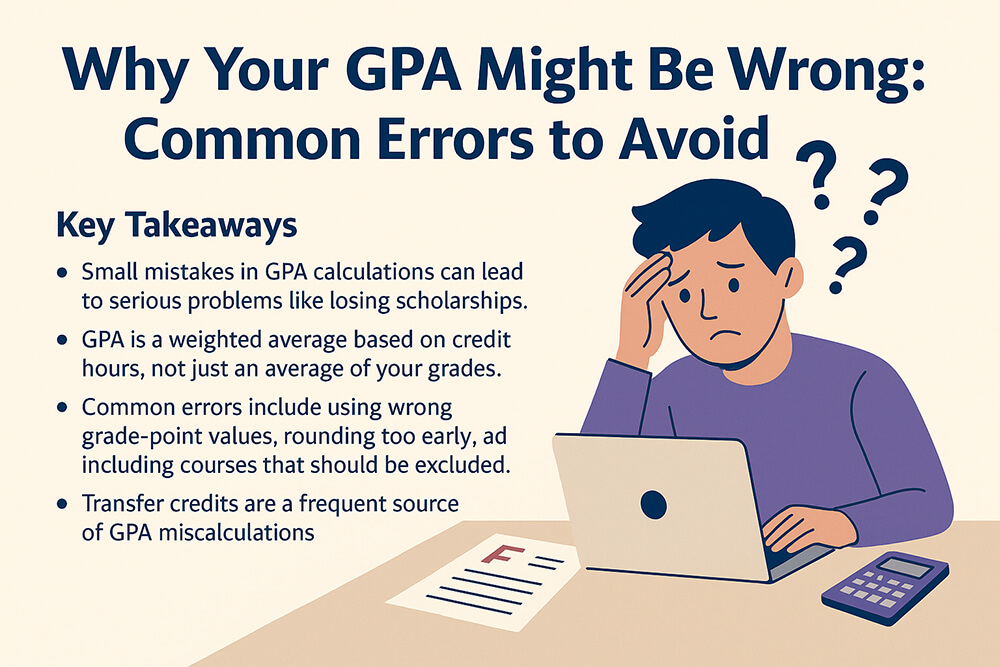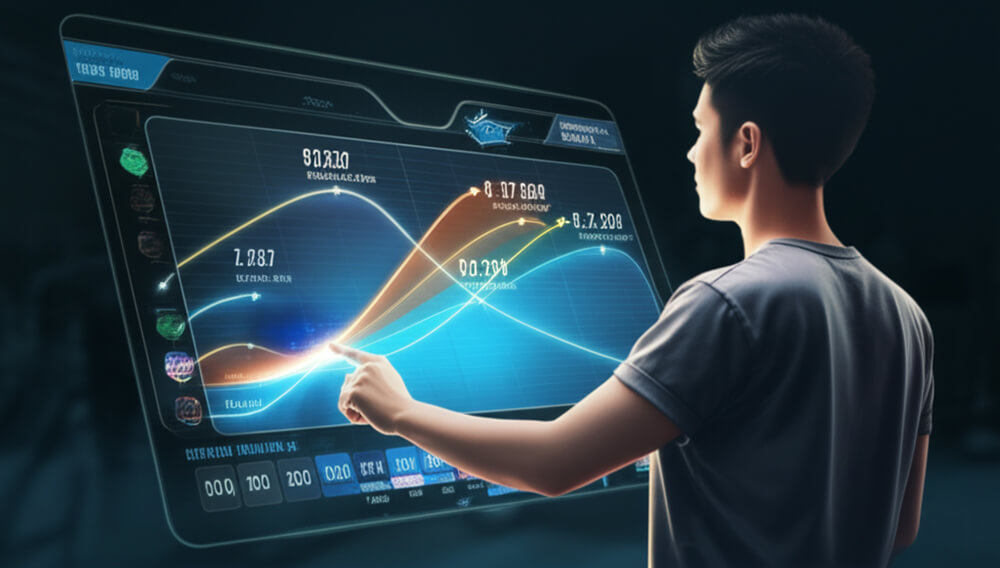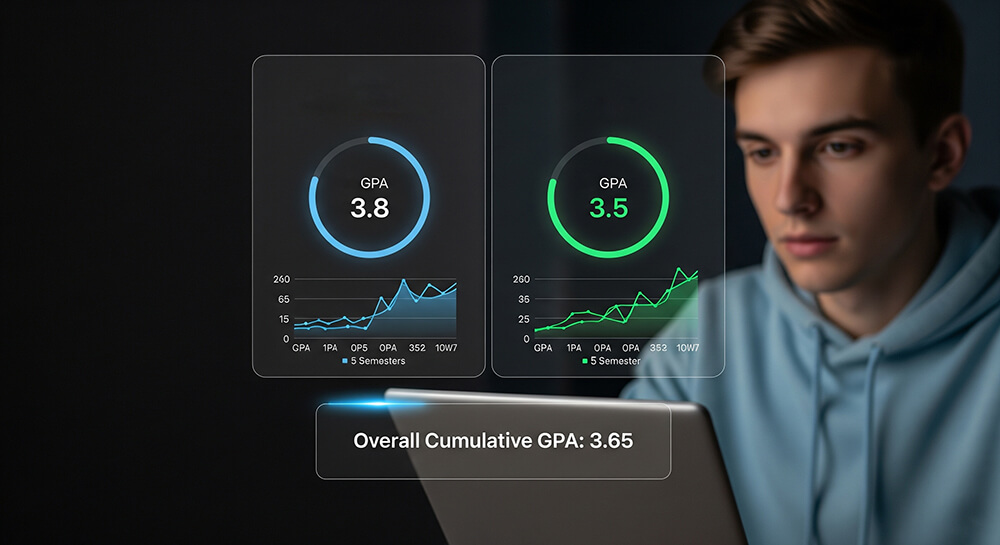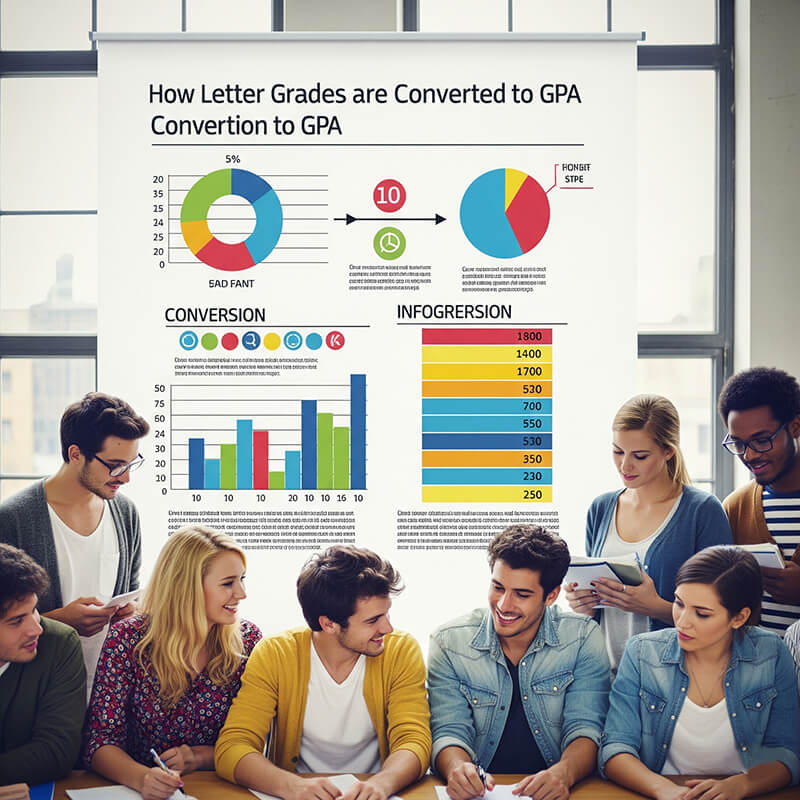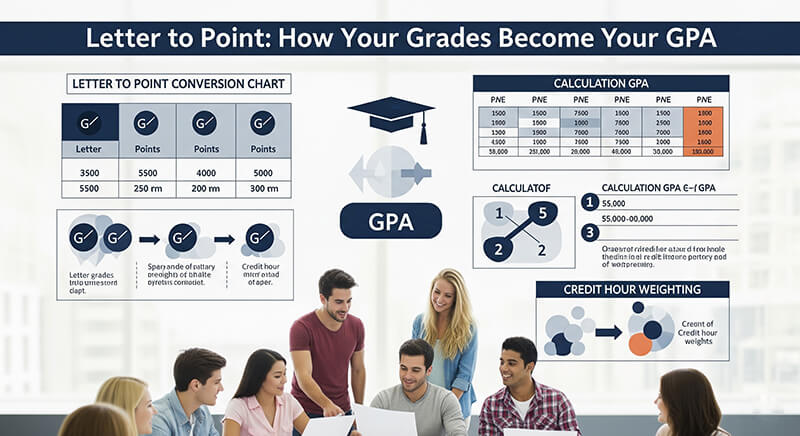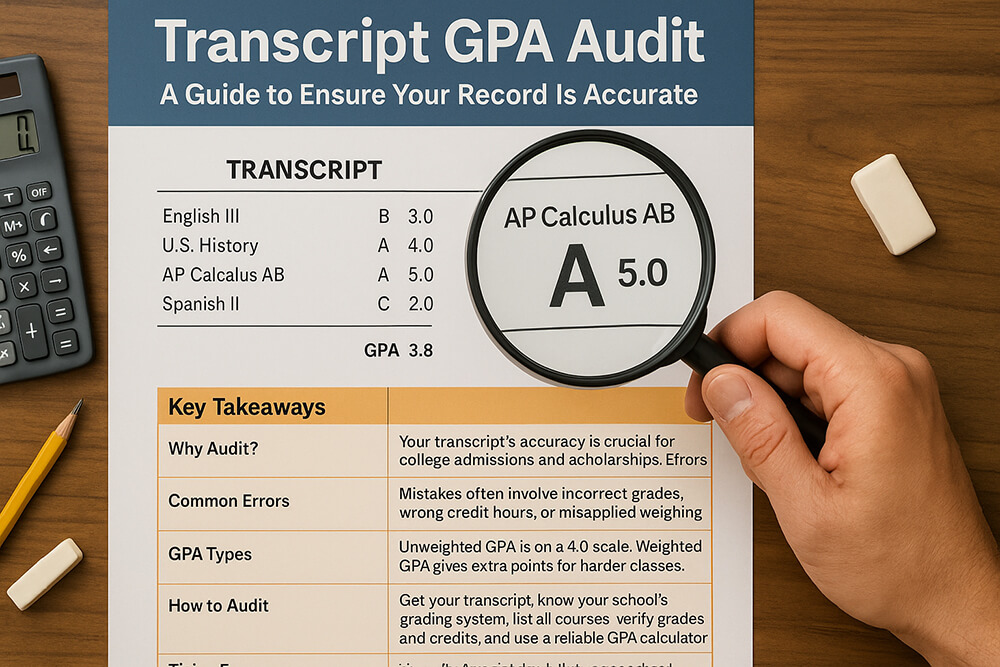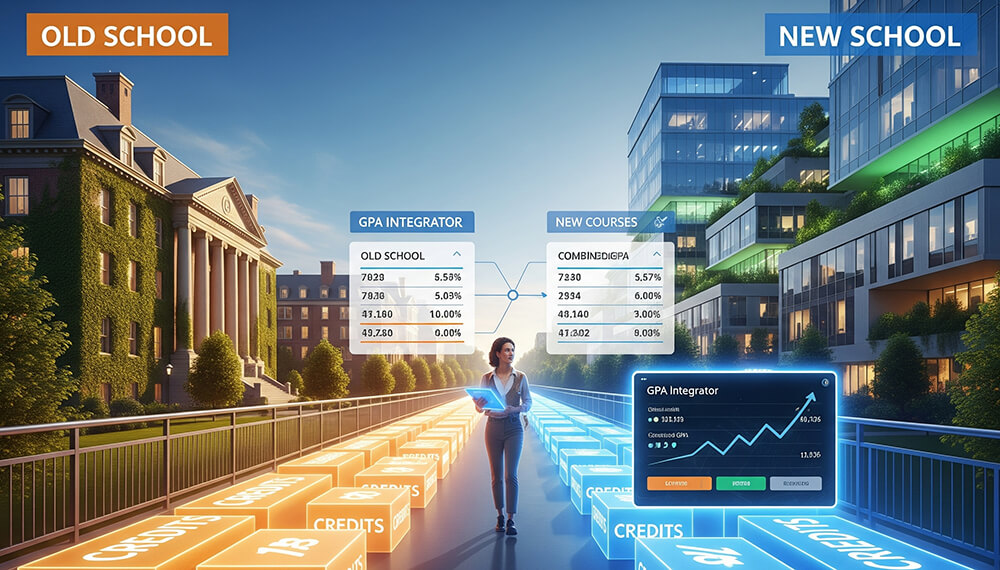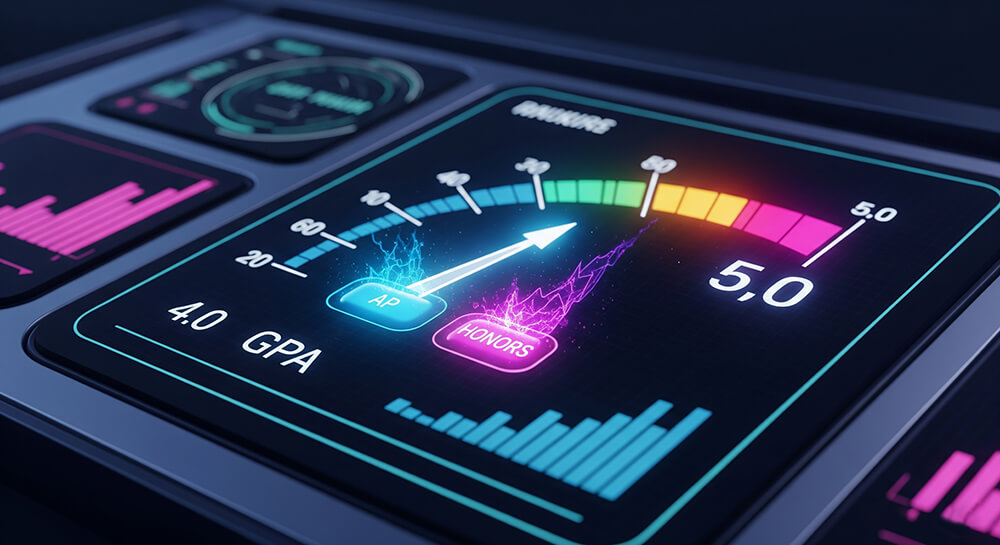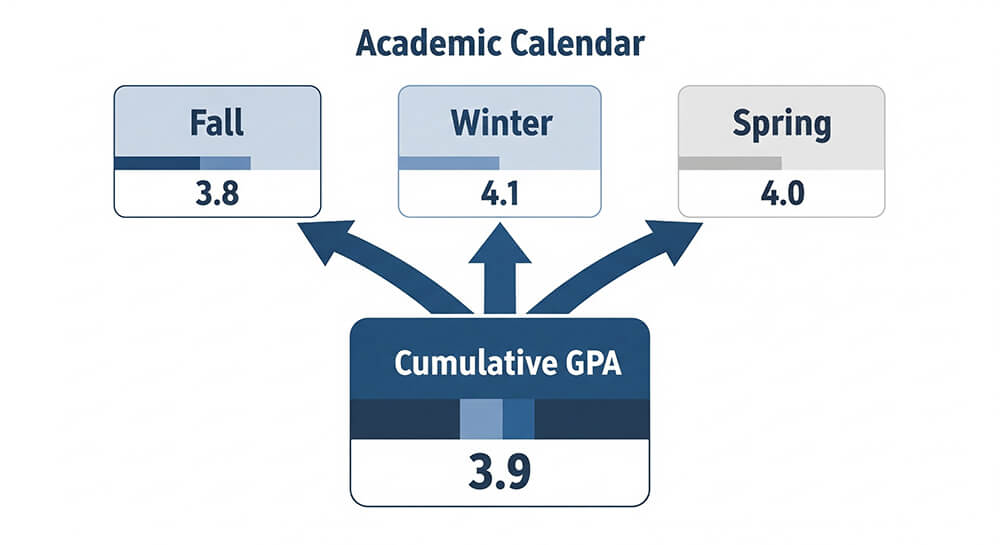Key Takeaways
| Feature | Description | Impact on Your GPA |
|---|---|---|
| What It Is | A Lab vs. Lecture Weight Splitter is a tool that calculates your final course grade when the lab and lecture parts are worth different percentages. | It provides an accurate grade by accounting for how much each part contributes to your final score. |
| Common Weights | Lectures often hold more weight (e.g., 70%) than labs (e.g., 30%). Some science courses may have splits like 65% lecture and 35% lab. | A poor grade in a heavily weighted lecture can significantly lower your overall grade, even with a good lab score. |
| Why It's Needed | Manual calculations can be complex and lead to errors. A splitter simplifies the process. | Using a tool prevents miscalculations, helping you understand your true academic standing. |
| Strategic Use | You can input hypothetical grades to see how future performance in either the lab or lecture might affect your final grade. | This allows you to focus your study efforts on the areas that will have the biggest positive impact on your GPA. |
Why Your Lab and Lecture Grades Are Separate
Many science courses split grades between a lecture and a lab. The lecture teaches you the theories. The lab lets you practice them. Because these two parts teach and test you in different ways, they often have separate grades. This method shows a fuller picture of your understanding. It also means you need to know the difference between various grading systems. A clear grasp of a weighted vs. unweighted GPA is the first step in managing your grades effectively. Understanding this difference helps you see why your lab score and lecture score are not just averaged together.
Understanding Common Lab and Lecture Weight Splits
Schools often give the lecture more weight than the lab. For example, your final grade might come 70% from the lecture and 30% from the lab. In some specific courses, like anatomy, a common split is 65% for the lecture and 35% for the lab. This balance ensures that your theoretical knowledge from lectures is the main part of your grade. The practical skills from the lab support it. Knowing your course's specific split is important for planning your studies. A GPA weighting guide for Honors and AP courses can offer more insight into how different course components are valued.
The Problem with Manual Grade Calculation
Trying to figure out your final grade by hand can be tricky. You must combine scores with different weights, which can lead to mistakes. A simple error in your math could make you think your grade is higher or lower than it really is. This can cause unnecessary stress or false confidence. Using a clear GPA formula guide is a good start, but mistakes can still happen. To avoid these issues, it is smart to recognize common GPA calculation errors to avoid and use a reliable tool instead.
How a Lab vs. Lecture Weight Splitter Works
A weight splitter tool makes grade calculation easy. You enter your grade for the lecture and its percentage weight. Then, you do the same for your lab grade and its weight. The tool does the math for you. It multiplies each grade by its weight and adds them together to get your final score. This simple process removes any guesswork. The main GPA calculator at TheGPACalculator.com is a great resource for this. It helps you understand exactly how to calculate your GPA without any complicated steps.
See How Lab Grades Affect Your Semester GPA
Your lab grade can change your overall semester GPA a lot. Even if a lab is only worth a small part of your grade, a very low or high score will make a difference. For example, a high grade in a lab worth 30% of your total can boost a lower lecture grade. On the other hand, a poor lab grade can pull down a good lecture score. Students in paired labs are often more likely to complete the lecture. A college GPA calculator lets you see the total impact of each course on your semester performance.
Project Your Final Grade with a Splitter Tool
A weight splitter tool helps you plan for the future. You can enter grades you expect to get on future assignments or exams. This shows you what score you need to reach your target grade for the course. For instance, you can see how an 'A' on your final lab project would lift your overall grade. This "what-if" analysis is a powerful study tool. Using a mid-term grade projection slider can help you visualize these outcomes and adjust your efforts before it is too late.
Managing Grades in Special Programs
Students in unique academic programs often face different grading challenges. For example, a dual degree program may have complex GPA requirements. A dual-degree GPA splitter can help manage grades across two fields of study. Similarly, students in International Baccalaureate programs need to understand how their scores translate. A guide on IB to GPA conversion is essential for them to track their academic standing accurately. These specialized tools help all students stay on top of their specific educational paths.
Converting Your Letter Grades to Points
To calculate your GPA, you must turn your letter grades into numbers. Each letter grade corresponds to a certain number of grade points, usually on a 4.0 scale. For example, an 'A' is often a 4.0, a 'B' is a 3.0, and so on. This conversion is a key step. A letter to point GPA conversion guide simplifies this process. It is also helpful to understand the difference between quality points vs. GPA explained to see how your final average is formed.
How Different Credit Hours Change Your GPA
The number of credits a course is worth matters. A grade in a 4-credit lecture class will impact your GPA more than a grade in a 1-credit lab. The final GPA is a weighted average that considers these credits. Therefore, doing well in high-credit courses is very important for boosting your overall GPA. A credit-hour weighting GPA guide can help you understand how to prioritize your study time based on which classes will have the biggest effect on your academic record.
What About Pass/Fail or Repeated Courses?
Some courses do not use traditional letter grades. They may be graded as pass/fail. It is important to know how pass/fail grades impact your GPA, as they usually do not affect it unless you fail. If you retake a class to get a better grade, a repeat course GPA recalculator can show you how the new grade will replace the old one. These tools are useful for managing special situations and making sure your GPA accurately reflects your best work.
From High School to College: A GPA Journey
Your GPA journey starts long before you enter college. The grades you earn in high school set the foundation for your future academic opportunities. A high school GPA calculator is a great tool for tracking your progress early on. As you transition to college, a freshman year GPA predictor can help you set realistic goals and stay on track from your very first semester. Managing your GPA is a continuous process that evolves as you move through your education.
Advanced GPA Management and Audits
As you advance in your studies, you may want to manage your GPA more closely. For example, you might need to calculate your GPA for your last 60 credits for graduate school applications. A last 60 credits GPA calculator is perfect for this. You can also perform a transcript GPA audit to ensure all your grades are recorded correctly. For students aiming for academic honors, a Dean's List eligibility checker helps you track if you are meeting the requirements.
Handling Transfer Credits in Your GPA
When you move from one school to another, you often bring your course credits with you. How these credits affect your new GPA can be confusing. A transfer credits GPA integrator is a valuable tool that helps you see how your previous coursework will be factored into your GPA at your new institution. This helps you understand your academic standing right from the start and plan your classes accordingly to meet your GPA goals.
Understanding Different GPA Scales
Not all schools use the same GPA scale. While the 4.0 scale is common, some high schools use a 5.0 scale to give extra weight to advanced classes. A 5.0 GPA scale guide can help you understand this system. It is also useful to know how school districts calculate GPA, as methods can vary. This knowledge ensures you can accurately interpret your GPA and compare it to the standards of different colleges and universities.
Common Myths About Weighted GPA
Many students have questions about weighted GPAs. There are many myths that can cause confusion. For instance, some believe a weighted GPA is always better than an unweighted one, which is not necessarily true. Reading about weighted GPA myths debunked can clear up these misconceptions. It is also helpful to learn about GPA inflation vs. deflation to understand how grading standards can differ between schools and over time.
Trimester and Other Unique GPA Systems
Some schools do not use the standard semester system. They may operate on a trimester or quarter system. These different academic calendars can change how your GPA is calculated each term. If your school uses this structure, a trimester GPA calculator is designed to fit your needs. It helps you accurately track your grades according to your school's specific system, so you always have a clear picture of your academic performance.
Frequently Asked Questions (FAQ)
1. What is a typical weight split between a lab and a lecture? Commonly, the lecture portion of a course is weighted more heavily than the lab. A frequent split is 70% for the lecture and 30% for the lab, though some science courses might use a 65%/35% split.
2. Why isn't the grade just a 50/50 average? The weights are different because the lecture and lab components serve different purposes and often have different credit hours. The lecture focuses on theoretical knowledge and typically carries more credits, while the lab focuses on practical application.
3. How can a good lab grade help my overall GPA? A strong performance in your lab can boost your final course grade, especially if your lecture grade is lower. Even with a smaller weight, a high lab score can pull up your average and positively impact your semester GPA.
4. Can I use a splitter tool to plan my final exams? Yes. You can input your current grades and then enter different possible scores for your final lab and lecture exams. This "what-if" analysis helps you see what grades you need to achieve to reach your desired overall course grade.
5. Where can I find a reliable Lab vs. Lecture Weight Splitter? Many online GPA calculators offer features for weighted grades. You can use a general weighted grade calculator and input the percentages for your lab and lecture as separate assignments. The tools at TheGPACalculator.com are designed to handle these types of calculations.
